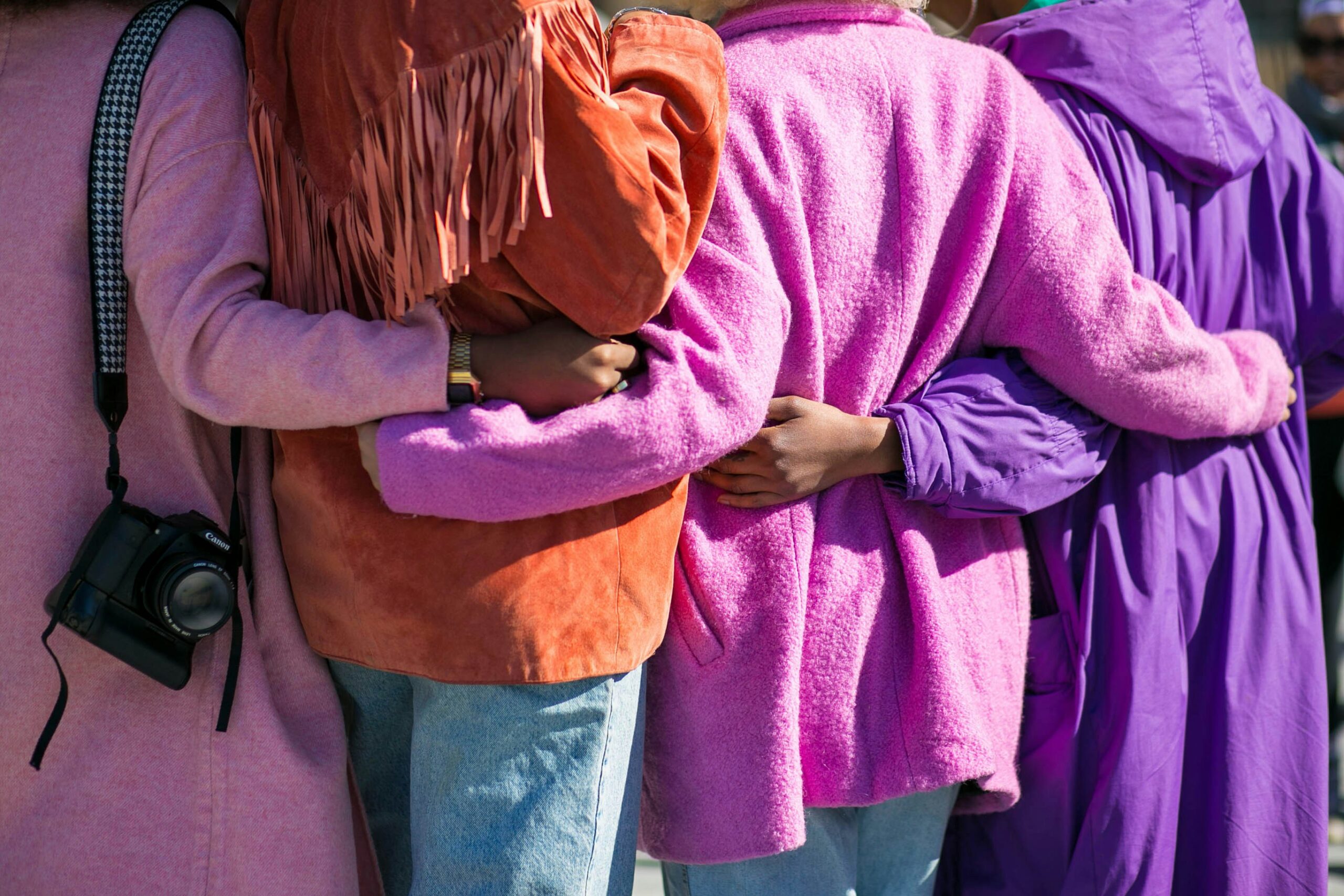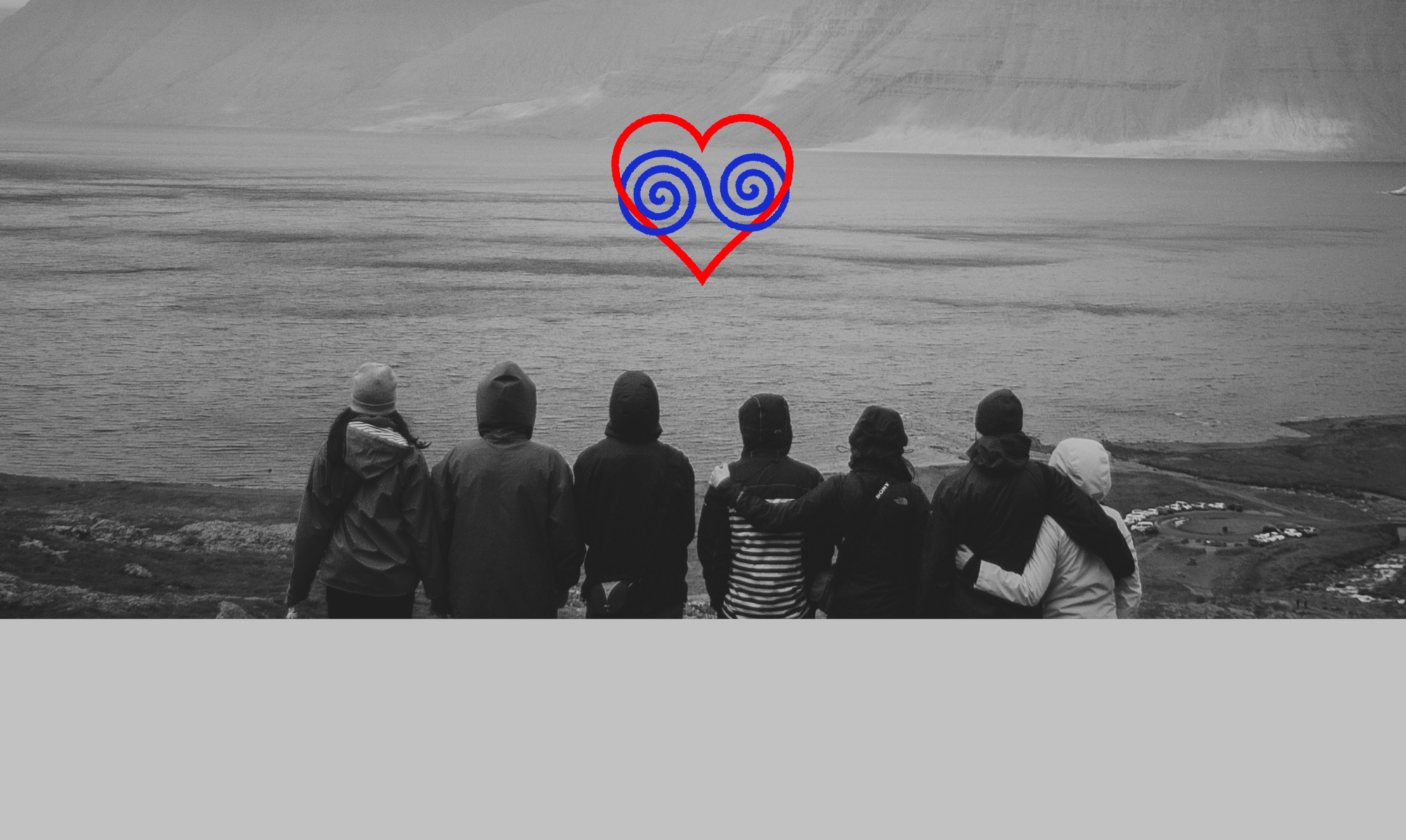Because it’s close to our hearts

March has arrived – and with it some significant dates: on the 7th we committed “Equal Pay Day“, which at the achievement of equal wages among women and men; on the 8th we celebrated International Women’s Day, which campains for global visibility, entitlement and empowerment of female issues since 1921 – and very modestly, Oligoamory is turning a great 6 years old these days!
In this sense, March is a truly feminist month – entirely in accordance with the birthday of Oligoamory, which explicitly owes so much – indeed, everything – to women and feminism: After all, it was the feminist and neopaganist Morning Glory Zell-Ravenheart who first established the word “polyamorous” within the context of ethical non-monogamous relationships in 1990 – which allowed me to promptly launch my own variety 29 years later, in the shape of my “committed-sustainable oligoamorous micro-communities”.
The two anniversaries mentioned in the first sentence of this Entry are particularly important to me in this context, which I realized especially when I was trying to come up with a headline for today’s article. I started by tinkering around with “Because we care”. However, the English word “care”, which comes across as so helpful at first glance, actually stands for a certain kind of burden, as it originally derives from the Old Germanic/Old Saxon word “cara”, which meant something like “lament” or “worry”… And I didn’t actually thought this analogy was all that exciting.
At the same time, nevertheless, in everyday life it is simply what it’s all about in the end: “care work“ is a euphemism of sorts used today to describe the mostly unpaid labour of providing and looking after, in which it is still far too often primarily women who deal with everything related to household and home, the people living in it, their health and, last but not least, procuring and preparing food.
Nonetheless, it goes without saying that things also have to be “taken care of” in ethical multiple relationships – and in Entry 93 I already tried to answer the question of who in poly- or oligoamorous relationships has to be responsible for handling tasks relating to the kitchen, housekeeping and potential children. For, of course, in relationships that consist of “more than two” people, caring for and looking after each other is one of the deciding core factors.
However, multiple relationships, which by their very nature consist of several participants, also present the challenge of increased complexity – especially with regard to the aspect of “care work” to be performed – precisely because it is not always obvious at first glance who is actually contributing and who is benefiting based on individual strategy. Or rather, at which point a relationship succeeds due to a high degree of joint cooperation and a pronounced sense of togetherness – or whether individual participants start to dominate the proceedings by gaining a growing advantage at the expense of the other contributors.
In fact, this process is so extraordinarily complex and – as we shall see – intertwined between people and, even more abstractly, between living beings in general, that various branches of science, from evolutionary biology to game theory, have been trying for decades to find out more and more about the background to this topic using increasingly sophisticated models.
Because as computer and programming technology increasingly got up to speed from the 1980s onwards – soon becoming capable of more than efficient analogue calculations in room-filling installations –, it provided further effective tools for mapping the patterns of interaction within larger groups without having to view and analyse hours of video footage from flocks of birds, pedestrian zones or flat-share kitchens.
Now small programs with certain attributes could be pitted against each other, which is even regularly organised competitively as an incentive by repeatedly calling on programmers worldwide to create software units that subsequently encounter each other within a virtual setting (e.g. ICPC or Kaggle competitions).
The tasks that programmes designed in this way have to tackle in this context correspond, for example, with the so-called ‘prisoner’s dilemma’ (which itself dates back to 1950 and was devised by Merrill Flood and Melvin Dresher): Two prisoners are in custody, but each could gain an advantage in the length of their sentence by denouncing the other prisoner because it would shorten their own time behind bars – while letting the other one stew a little longer. So one could pull this trump card and get out faster – or keep quiet in the hope that the other party will also keep quiet (a kind of “win-win”) – because of course there would also be the possibility of being betrayed by the other side, which would either keep you in prison yourself – or indeed together – for longer (“win-lose” or “lose-lose”). Programming that proves its worth here advances to the next stage – whereas software that loses out too often due to incorrect assessment of its opponent will be ruled out.
In an article for Bayerischer Rundfunk (BR)¹ this January, Nikoleta E. Glynatsi, a mathematician at the RIKEN Institute for Computer Science in Kobe (Japan), explained that, from a mathematical point of view, such situations often seem straightforward at first: “Maths shows us that you should always act selfishly because it is costly to be selfless and one can never be sure whether this generosity will ever pay off.”
Interestingly, however, her continued experiments revealed that neither the most aggressive programmes nor those that relied on simple ‘tit-for-tat’ tactics prevailed. This was because some programs had a long-term memory (i.e. a kind of ‘remembering’) concerning the earlier behaviour of their counterparts – and how they had previously ‘dealt’ with other programs; in contrast, simpler programs mainly acted purely randomly. It became apparent that in the long term, the best results were not achieved through rigid approaches such as ‘never give in’ or ‘always co-operate’, but rather by using flexible strategies: “One should react to what the other person is doing and mirror their behaviour to a certain extent – albeit depending on the context.” explains Glynatsi.
In my last Entry 110, I quoted the neurobiologist Herwig Baier, who described how an organism needs to have its individual past, present and future in mind in the truest sense of the word in order to be able to carry out complex decisions in a useful way: It would have to be able to remember past events, focus on current requirements and, if possible, foresee the effects of its actions for the future.
The importance of this “memory of experience” mentioned above was now also confirmed in December 2024 in the recent study² by Mrs Glynatsi.
For human contexts, this immediately puts psychology back on board.
For example, the psychologist Felix Brodbeck from the Ludwig-Maximilians-University of Munich extracts this from Glynatsi’s research work:
“The longer the memory, the more likely it is that cooperation will be appropriate to the situation. I would even be tempted to say that without memory, cooperation is not possible at all. A longer memory makes it possible to incorporate past experiences into current decisions. This not only builds up trust, but also minimises the likelihood of conflict. In contrast, those who are only looking for short-term gains risk damaging long-term relationships, whether in their private life or at work.”
Or, as the journalist Doris Tromballa put it very aptly at the end of her BR article mentioned above: “Those who act flexibly reduce the risk of being exploited and at the same time avoid being perceived as selfish.”
Research such as that carried out by Mrs Glynatsi and her team is likely to become of far-reaching significance for our society as a whole.
After all, on the one hand, the processing power of super- and quantum computers is increasing several times over every year, so that the assessment, evaluation and prediction of human interaction will also prove increasingly accurate when mapped in virtual spaces. Where – on the other hand – this kind of data will most certainly be taken up and integrated by the rapidly developing parallel research in the field of artificial intelligence (AI). AI, by the way, that we already all interact with today, from search engines to graphics programmes!
Which in a way also points the way to the moment that has become known as “technological singularity” – and describes the threshold at which artificial intelligence could possibly surpass human intelligence in the future…
That is, as far as the potential of computer ‘brains’ that analyse and emulate (simulate) human interaction in this way are concerned.
But what about the ‘original’ – our own brains?
Indeed, the idea that we humans are capable of a similar ‘singularity’ on our own is not entirely new and was already popularised by the US thriller author Dan Brown in his 2009 book “The Lost Symbol”: The world’s human population is currently still growing demographically. In purely physical terms this means that ‘more brains’, more potential human minds, are being added day by day. But also Dan Brown already pointed out that brain mass alone wouldn’t be the decisive factor. As an optimist, he rather projected an accompanying rising learning curve of human consciousness, an accelerating increase in insight and knowledge, which could one day – by crossing its own ‘singularity threshold’ – catapult mankind to groundbreaking possibilities, creative talents, abilities, and achievements.
Humanity – as a kind of unified, biological supercomputer? God complex? Absurd tech fiction?
No, I don’t think so. But I do believe that for this we need something more than just literary optimism – and that brings us back to the anniversaries I mentioned at the beginning of this Entry.
Because in my opinion, we as humanity could perhaps have experienced our ‘singularity moment’ some time ago. Or rather: this would already be absolutely within our reach.
If – yes, if – we were to do as the programmes do – and exploit our entire human potential to the utmost.
However, as long as we continue, as we have done for centuries, to undervalue and put aside the female part of humanity (not to mention other sexes and genders…) and to continually disadvantage and set back people of other ethnic origins, world views, handicaps, ages or identities, it is as if we are, in a sense, severing a huge part of our great human spirit. Lest it become wasted, because the ideas, perspectives, impulses, experiences and inventions that the individuals oppressed in this way might otherwise have contributed to the greater whole evaporate unheard and unused – or rather, could never even arise in the first place due to a lack of educational participation.
But for our own ‘singularity leap’, if it is not to be realised first – or only solely – by an AI in the future, we need all of us! Really all of us, with the greatest possible, unlocked mental and spiritual potential. Integrative and inclusive.
Bold words. Which are certainly important to take to heart, even without ‘singularity’ as a goal…
Why am I still an optimist like Dan Brown – and what do multiple relationships have to do with it, after all, which is what this bLog is supposed to be about?
Once again, science has provided a clue to the answer.
In her latest book “Mother Brain – How Neuroscience Is Rewriting the Story of Parenthood”, science journalist Chelsea Conaboy³ dispels another prejudice about women, which is that pregnancy and the birth of a child puts their minds in a kind of ‘unpredictable limbo’, causing them even to lose their intellectual capacity (which for centuries also served as a male argument for excluding women from responsible functions and jobs).
In fact, Conaboy summarises scientific evidence that the brains of parenting mothers – as well as fathers, co-carers and other close attachment figures – really do change when caring for a child. What’s more, in a fundamentally beneficial way for the entire future life of these people!
In her book, she vividly describes how everyday “care work” is inextricably linked to certain interdependent neurobiological processes – precisely because we care.
The author further concludes that these results are rather obvious because of the human capacity for lifelong learning – due to the equally lifelong plasticity of the human mind – and would thus also have considerable significance for all other areas of interpersonal caregiving, providing and support.
In other words, when people enter into relationships, their brains experience a transformation. This effect has even been proven to be amplified by the ‘care factor’: What is “close to our hearts” promotes our ability to become, to be and to remain even better “care workers”.
This also confirms another benefit that medical experts have been emphasising for a long time. That even a single relationship – and the incentives we experience through it – boosts the health of those involved. And yes, in this case, ‘more is (even) better’ – especially if these relationships are a ‘matter of the heart’ in which we – corresponding to the words of the above-mentioned psychologist Felix Brodbeck – cooperate appropriately, minimise conflicts and build up trust.
By which I want to back up all you people out there in relationships today: Just one relationship can not only change your life – it fundamentally changes you; indeed, it is apparently enough to have been part of a caring relationship for a while in your past for this inner metamorphosis to stay with you for a lifetime.
So if it is ever suggested to you who are even part of multiple relationships that you “are wired differently”, then happily agree with that and feel proud that this corresponds with every single one of your loving connections – both as scientifically confirmed as well as an actual deep inner human truth that connects us with all other inhabitants of the world capable of entering into a relationship. Precisely because it is close to our hearts.
And by the way , it was the American astronomer, visionary and futurist Carl Sagan, who once said:
»Who are we, if not measured by our input on others?
That’s who we are!
We’re not who we say we are, we’re not who we want to be – we are the sum of the influence and impact that we have, in our lives, on others.«
¹ The article “Kooperation oder Konkurrenz – Was ist besser?” first published on BR on 15th January 2025 on Bayern 2 can be found in the ARD archive of the Tagesschau (only in German language) HERE
² Link to the study by Nikoleta E. Glynatsi, Ethan Akin, Martin A. Nowak and Christian Hilbe “Conditional cooperation with longer memory” from 6th December 2024 HERE
³ Chelsea Conaboy, “Mother Brain”, St Martin’s Press, September 2022
Thanks to Vonecia Carswell on Unsplash for the photo!

